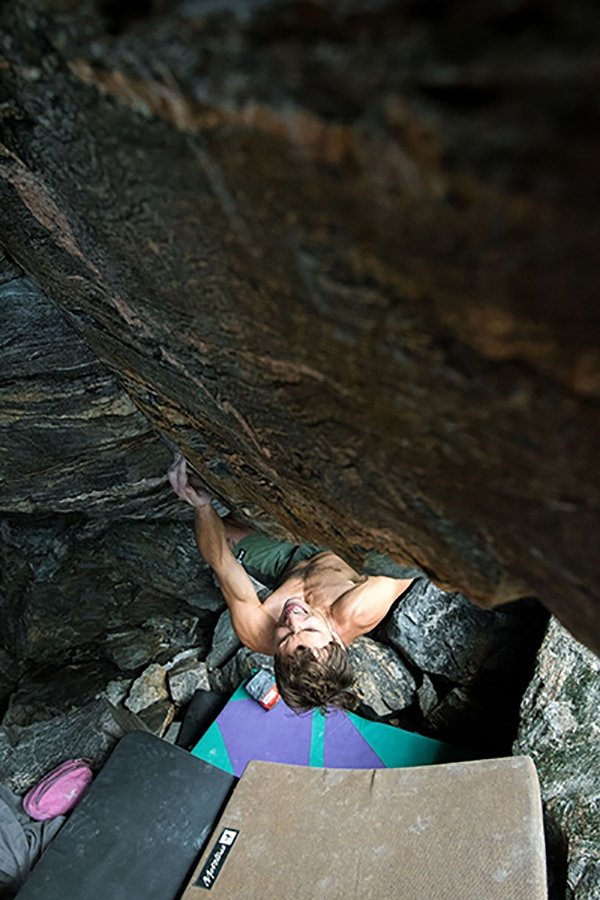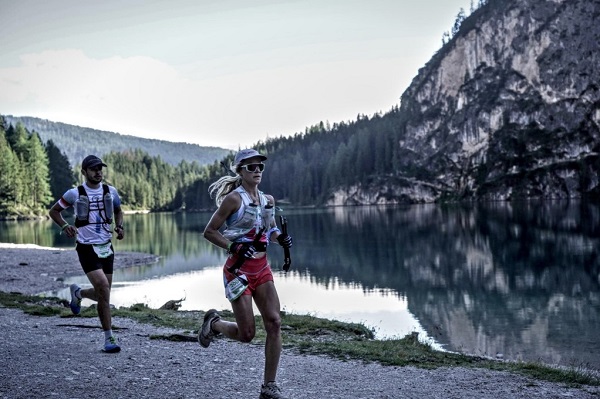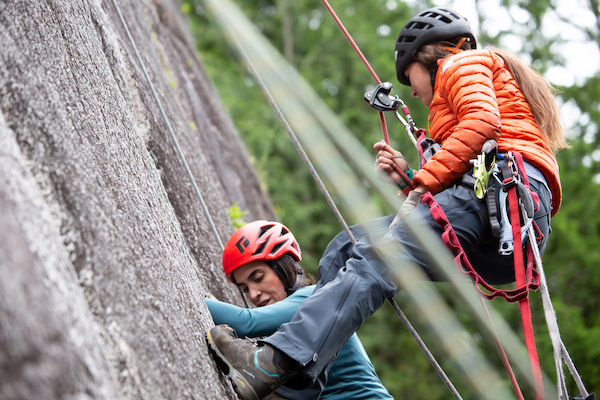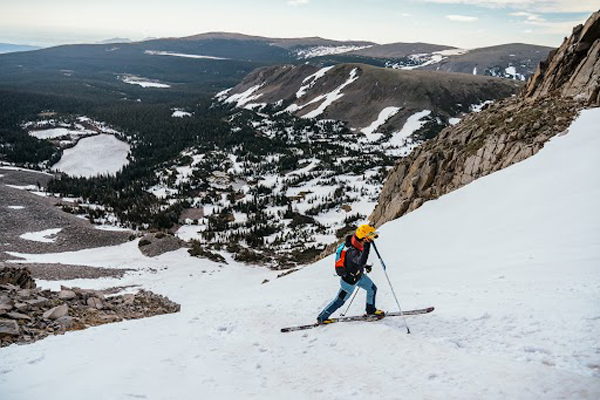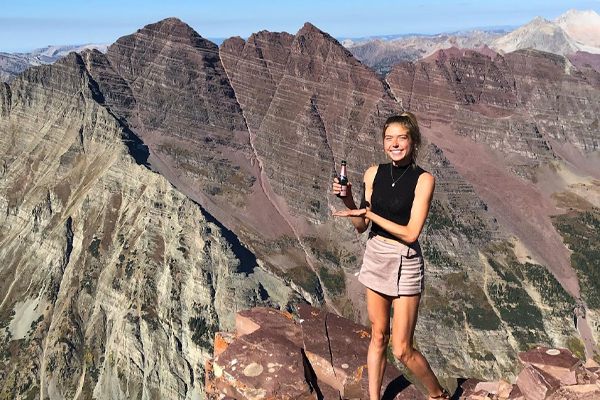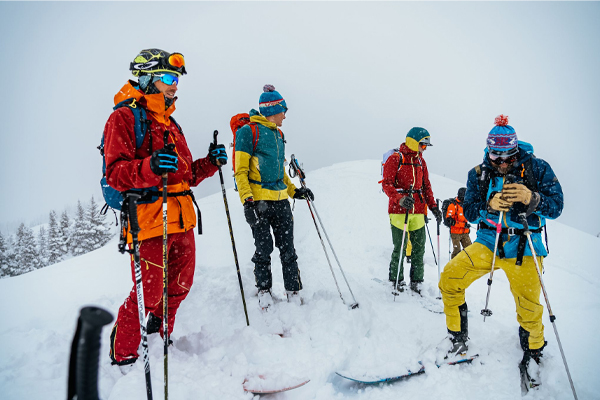Jonathan Siegrist - Bouldering in RMNP

Sport climber Jonathan Siegrist trains power through bouldering in RMNP during the summer off-season.
- - -
Sport climbing (with the occasional traditional route) was overwhelmingly my focus for nearly a decade. Through many cycles of systematic training, countless international trips and living in my truck traveling for climbing for five years, I had never been on a strict bouldering mission. Somewhere tucked away in my conscience I knew that a good bout of bouldering would likely be an incredible way to improve my climbing, albeit a total ass kicking. During the summer of 2015, with the short alpine season window looming, I decided to take the plunge.
I knew that just trying to boulder as well as I could would not be a specific enough goal for me to succeed. I really wanted to fully adopt the bouldering mentality and focus, and to do so I needed to be seriously challenged. So I set an ambitious goal: try to climb 12 boulder problems V12 or harder in a month. Nothing more than the norm for an elite boulderer, for me, having done only two boulders this hard in 11 years of climbing (one of them being really soft…) I knew it would be a stretch. Living in Estes Park and hiking to Chaos Canyon nearly every day, I barely got it done, sending my final V12 or harder problem on the final day of the month allotment. I also relied on one of my few crossover assets (finger strength) for an ascent of "Jade" that summer, my first V14.
When I came back to routes after about six weeks of bouldering, I felt different. For one I felt hopelessly pumped! It was a depressing first few weeks to regaining fitness but on the up side I felt snappy and dynamic like never before. The things I learned about climbing from that summer carried over into my sport climbing that fall and beyond. Since that summer I have completely embraced the subtle and aggressive nature of bouldering in an attempt to improve my overall climbing and, if nothing else, get a change of scenery.
Jonathan Siegrist climbing "Storm Shadow Sit" (V12) in Colorado's Rocky Mountain National Park. Photo: Shaina Savoy
Since my initial experiment, I've incorporated bouldering for short periods over the summer season into my training for the last three years. I usually go full bouldering immersion during these periods, so no route climbing at all, and usually I will boulder five days a week. Often I will add in some additional training at the end of a bouldering day if I have energy left over. This can be some simple fingers stuff, or weight lifting. When it comes to working boulders, I am definitely going for new-to-me boulders and really just trying my hardest to do double digit boulders across styles; some longer, resistant boulders and some short ones too.
Last year I climbed some truly amazing park boulders like “Irreversible” (V13), “The Shining” (V13) and “Wheel of Chaos” (V13/14). “Gobot” (V11) actually took the most effort out of me, and was particularly satisfying. This summer I returned for some weeks to do “Storm Shadow Sit” (V12), “The Wheel Direct” (V13/14) and another personal nemesis “Whispers of Wisdom” (V10), among many others.
So what can a sport climber learn from the boulderfield? Here are three things that I have learned over these last few years from my missions on the pebbles.
Bouldering is all about subtlety. I have learned so much about body positioning, body tension and even how to grab holds during my time bouldering. Minute changes in the way I set my feet or the way I grab a hold can easily make the difference between sending or not. I notice where I need to tense my body to keep my feet or hands on the wall, and where I can relax to get through difficult movement. The more I become aware of all of these little factors the more I can instinctually make the adjustments next time around. This has been hugely beneficial for figuring out crux sequences on routes.
Jonathan Siegrist climbing "Memoirs of an Invisible Climber" (V11/12). Photo: Joe Segretti
For me, when crossing over from routes, bouldering takes a lot of patience. I usually set a timer to make sure I get at least a five-minute rest between tries on a hard boulder because otherwise my power and strength deteriorate rapidly. Coming from a long session of sport cragging where you are either climbing or belaying nearly every minute of the day, to sit and recover after a 20-second try can be arduous. However, patience is an enormous asset in every aspect of climbing (save maybe speed climbing) and the in-between times always help me appreciate the beautiful environment I’m in. Sometimes I even rest up to 15 minutes between tries on a longer boulder.
There is much more to take away from a season of bouldering but I hope this is enough to convince some of you die-hard sport fanatics out there to take a month and haul a pad up to the boulderfield. Watch some lifelong boulderers and see how they do it, enjoy the absence of ropes and gear, and try as hard as you can. Oh, and lastly, remember to land on the pad!
Preview & Photo 1: © Shaina Savoy
Photos 2: © Joe Segretti
- - -
ABOUT THE AUTHOR
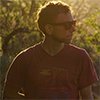 JONATHAN SIEGRIST is a member of the La Sportiva Climbing Team.
JONATHAN SIEGRIST is a member of the La Sportiva Climbing Team.
- - -


